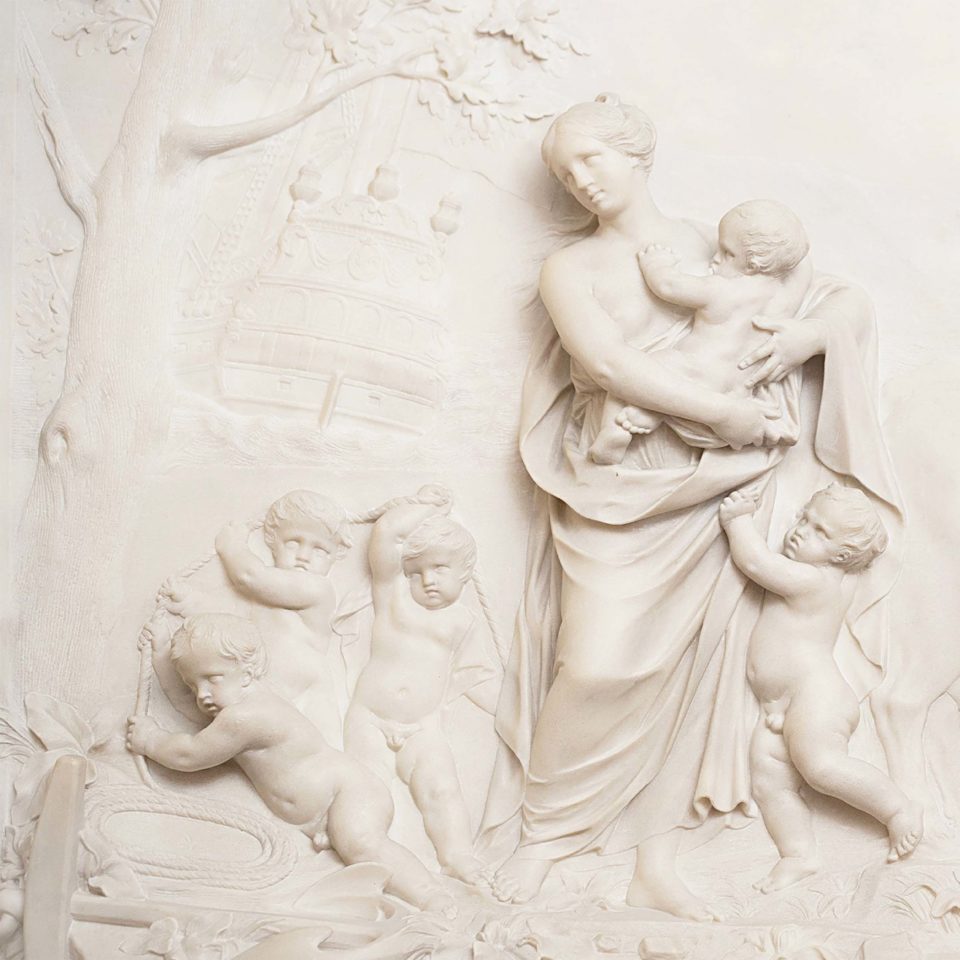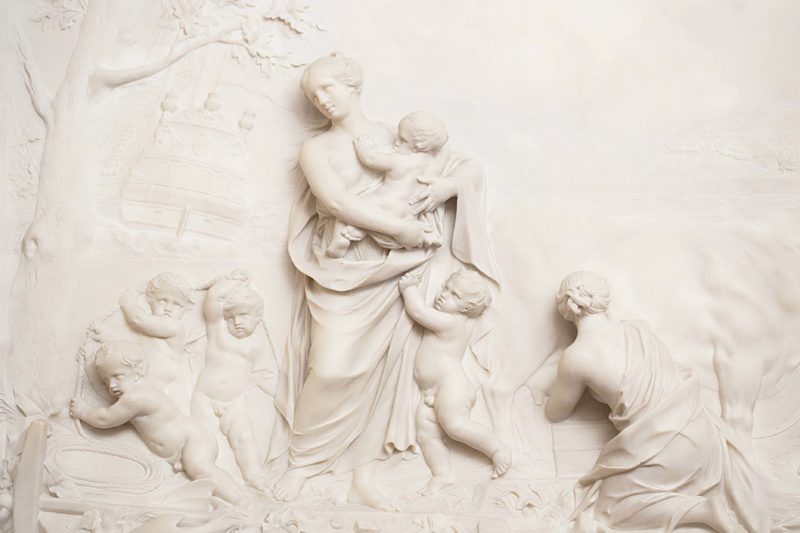About the object
A standing female figure personifies the idea of charity. She is shown surrounded by children engaged in harvesting and rope-making, suggesting the Foundlings’ future working lives. One of the reasons put forward for establishing the Foundling Hospital was to prevent the unnecessary deaths of children and instead to raise them to join Britain’s work force as useful citizens.
About the artist
John Michael Rysbrack was a Flemish artist who came to England in 1720 and spent most of his life in London. He became one of the most respected sculptors in Britain, creating portraits of leading figures such as the politician Robert Walpole, as well as public works such as the monument to Isaac Newton in Westminster Abbey.
In 1745, Rysbrack became one of the first artists to be elected as a Governor of the Foundling Hospital, upon donating this allegorical relief sculpture. In 1746, Charity was set into a marble chimneypiece, which was created and donated to the Foundling Hospital by mason John Devall. This was part of the interior of the Hospital’s Court Room, where the Governors would meet to discuss Hospital business.
Artistic response
Below you can read Brigid’s poem, The Foundling Museum Court Room inspired by her object choice.
In the foundry of good intentions, the children are formed,
lowly and without expectation.
Hidden in Holborn a marble piece is set above the mantle, the solid babies work.
They plough; they reap, they milk and heave, some twist rope and haul great ships.
Babies were found, fed and schooled, renamed and their futures set into stone.
Babies stratified in rock, marble predictions.In the middle of the boys is a girl, she is older.
Charity holds a babe, while another reaches arms up to be elevated.
To the girls the promise of domestic work, unremarkable, unrecorded,
quiet movers become corner stones.I think on my small sphere, a midwinter evening folds in.
I wash, I peel, I clear, I set a table as hands and heart engage.

